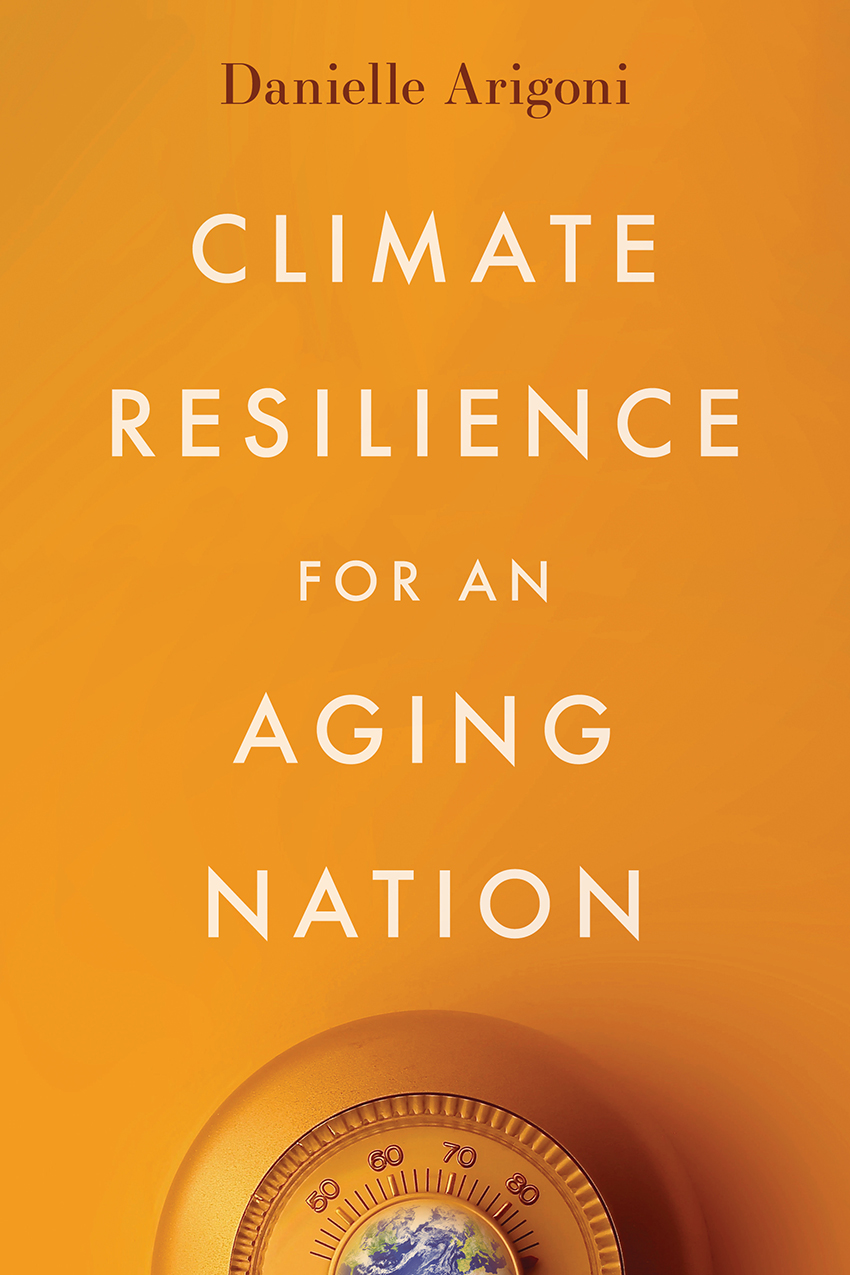By Ray Bert
Climate Resilience for an Aging Nation, by Danielle Arigoni. Washington, D.C.: Island Press, 2023; 236 pages, $30.
“I firmly believe that our climate change trends are on a collision course with our nation’s demographic trends,” writes Danielle Arigoni in the preface to Climate Resilience for an Aging Nation, neatly summarizing the book’s impetus in less than 20 words.
The trends in question are simple enough to describe but much less simple to effectively combat. On one hand, we as a country have the undeniable increase in climate-enhanced disasters, from hurricanes to floods, wildfires to record-breaking heat waves. On the other is the growing share of the U.S. population that is 65 or older, a number that grew 38% between 2010 and 2020 and is projected to exceed the number of people under 18 by 2034.
The collision Arigoni refers to is the disproportionate number of those over 65 who suffer or die as the result of natural disasters.
Put simply, on balance, the older population is significantly less resilient in the face of extreme events. And not only for the more immediately obvious reasons such as frailty or a more likely need for uninterrupted medical care. The book notes that on top of those reasons must be added the increased possibility (again, on balance) of more limited financial resources, living alone, a greater incidence of cognitive issues, and even an inability to drive.
And as Arigoni repeatedly reminds the reader, while these effects are already easy to see based on disaster statistics now, the forecasts show that the aging trend will continue to increase for some time.
Arigoni has a background that gives her experience and expertise on this topic that are difficult to match. In addition to holding a master’s in city and regional planning from Cornell, she previously held leadership positions with the U.S. Department of Housing and Urban Development and the U.S. Environmental Protection Agency She also led HUD’s $1 billion National Disaster Resilience Competition and has served as director of livable communities for the AARP. She now serves as managing director for policy and solutions at the National Housing Trust.

Explaining the problem is, of course, just the first necessary step in making people understand the issue. The goal of Climate Resilience for an Aging Nation is to address it, and to do so, Arigoni argues, we must face the fact that older adults fare worse in disasters as “a by-product of the decisions that communities have made and continue to make about their growth.” In other words, we need to regularly and explicitly include the needs of older adults as inputs to our decisions about transportation, housing, critical infrastructure, and so much more.
Just a few of the strategies for “age-friendly resilience” that she discusses include redundant and sustainable energy systems, including a resilient grid infrastructure; providing better housing options, including building more small and attached homes that simultaneously reduce energy usage and encourage social interaction; expanding transportation and mobility options; and strengthening social infrastructures, particularly intergenerational ones.
Arigoni also provides three case studies (in New York state; Portland, Oregon; and New Orleans) that help illustrate deliberate community resilience initiatives in action.
Climate Resilience for an Aging Nation is meant as a wake-up call. Our population is old and growing older, and there are known consequences to that aging, particularly (though not exclusively) in an era of increasing disaster scenarios. The book argues convincingly that the only responsible thing to do is to recognize them, plan for them, and ensure that members of one of the more vulnerable segments of our nation are protected as well as they can be.
This article is published by Civil Engineering Online.



